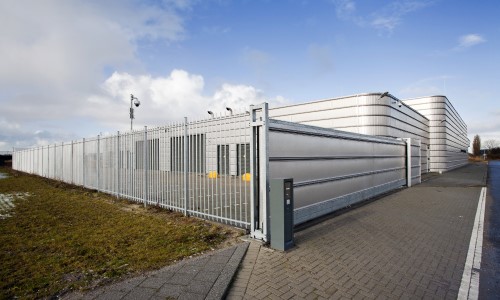It is a common misconception that cybercriminals operate exclusively behind computers and do their work purely by hacking and utilizing computer software.
Cybercriminals are very much a problem in the real world as well as the digital one, as highly funded and extremely sophisticated groups operate to find the best ways to gain access to IT systems.
One of the ways that they will do this involves operating in the real world — gaining access to the premises of an organization in order to gain physical entry into the system, or conducting surveillance of staff and learning what they can.
This means that many organizations are having to start taking their physical security very seriously — not only does it protect staff; it can also defend them against cyberattacks.
Putting physical security measures in place can make it extremely difficult for criminals to gain access to campus property, and ultimately it can put them off considering an organization as a target at all. Physical security products, services and solutions have become a major part of the fight against cybercrime.
Here we take a look at the physical security measures that organizations can put in place, and what they will do to deter cybercriminals.
Making Surveillance Challenging
Sophisticated cybercriminals will often carry out an extensive campaign of surveillance against an organization. This could be for a variety of reasons — they may wish to understand which members of staff to target in order to easily gain access to the system, or they might even be planning a physical breach of the premises.
Remember that these criminals just want access to valuable company data, and while they will go to great lengths to get it, they will always prefer the easiest option. If they establish that they can easily enter a building and log into the IT system, they will do that, rather than attempting to breach the infrastructure remotely.
To protect against this cyber threat, it is important to make surveillance of a property as challenging as possible. One of the best ways to this is to fully secure a campus parking lot. This will involve not only putting a barrier in place at the entrance, but you may also need to block off other entry points into the parking lot — essentially any space large enough for a vehicle to drive through.
Preventing Unauthorized Access
Just as it is important to limit the possibility of surveillance taking place, organizations are also taking steps to ensure that cybercriminals cannot gain physical access to the premises. Once again, it is easy to assume that all cybercrime is conducted by remote hackers, however, criminals often utilize physical intrusion for a variety of means.
One common method involves placing a USB stick on a desk with a note attached. When an employee plugs the stick into their computer, a virus is able to infect the system, providing the hacker with access. Additionally, for businesses that do not have password-protected computers, it can be as easy for a hacker to simply walk in the door and gain access to sensitive files and data.
There are many steps that an organization can take to prevent cybercriminals from gaining this sort of access to their system. First, it is necessary to establish effective access control throughout the campus to only allow authorized people where they need to go. Key cards or mobile credentials are secure solutions that also allow staff to pass through doors quickly.
Always Watching
Another form of physical security that can be an excellent deterrent to intrusion from criminals is video surveillance. Having cameras monitoring the property at all times not only makes staff feel more secure, but it can also do a lot to show any criminals considering targeting the business that its attitude to security is serious.
It is important organizations let it be known that video surveillance is in operation across their property, as no criminal wants to get caught breaking into a property on camera. When they notice that cameras are in operation, they will likely leave the company and move on to another potential target. This takes away an important potential option for cybercriminals.’
Mike James is a UK-based writer specializing in security, cybersecurity and the potential threats to business malicious attacks can pose. Having worked in various guises of information technology over the years, he now enjoys writing for a range of magazine and internet publications on these subjects. He wished to give a special thanks to security-barriers specialist Maltaward, who were consulted over the information used to write this article.
This article originally ran in Campus Safety’s sister publication, Security Sales & Integration.







